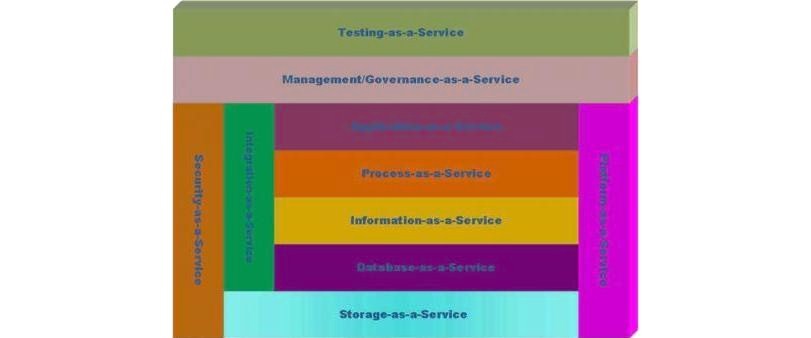The Main Categories Of Cloud Computing Technology

Storage as a Service: As the name indicates, it provides the ability to use storage that physically exists in a remote site, but is, of course, a resource site for any application that requires storage. It is the most primitive component of cloud computing, which is operated by most of others.
Database as a Service: Ability to use the services of a database hosted remotely, sharing it with others. Function logically as if the database was local. Several vendors offer different models, but its strength is in exploring the technology database that normally would cost thousands of Rupees for hardware and software licenses.
Information as a Service: Ability to consume any type of information, hosted remotely, through a well defined interface, such as an API.
Process as a Service: Action remote that can meet many others, such as services and data, whether hosted in the same cloud services feature or remotely, to create business processes. You can think of a business process as a meta-application that covers systems, exploring services and information which are combined in sequence to form processes. In general, they are easier to change than the applications, providing flexibility to those who use these mechanisms of processes available upon request.
Application as a service (or SaaS): Any application offered on the web platform for an end user, usually by exploiting the application browser. While many people associate application as a service to corporate applications such as Salesforce SFA, applications, office automation, in fact, also as a service applications, including Google Docs, Gmail and Google Calendar.
Platform as a Service: Platform solution, including application development, interface and database, storage, test and so on, available to subscribers on a hosted platform remotely. Based on the traditional model of time-shared, modern platform as service providers offer the ability to create enterprise applications for local use or on demand, for free or for a small subscription charge.
Integration as a Service: Ability to provide a complete integration stack from the cloud, including interfacing with applications, semantic mediation, flow control, design integration and so on. In essence, integration as a service covers most of the features and functions found in conventional technology for enterprise application integration (EAI), but provided as a service.
Security as a Service: Ability to provide essential security services remotely via the Internet. Most of the security services available is rudimentary, but some more sophisticated, such as identity management, begin to be offered.
Management / Governance as service: Any service that enables on-demand manage one or more cloud computing services, such as time management activity, topology, resource utilization and virtualization. Also starting to emerge governance systems, such as capacity to implement policies for data and services.
Testing as a Service: Ability to test local systems or using software provided cloud and testing services hosted remotely. It is important to note that although a cloud service requires testing in itself, testing systems, as service can check other applications in the cloud, Web sites and internal business systems, don’t require room for hardware or software in the enterprise.
Infrastructure as a Service: This is the data center as a service or the ability to access computing resources remotely. In essence, you rent a physical server or server colocation, you can use it as per requirement. For practical purposes, it is your data center or at least part of a data center. The difference this approach to cloud computing here is that, instead of using an interface and a measured service, you have access to the whole machine and the software in this machine. It is less “packaged” and more like server hosting.
- How Cloud Computing Is Changing The Labor Market - March 25, 2015
- Adopting Infrastructure as a Service Can be a Good Deal - March 17, 2015
- Will Virtualize? Take These Six Points Into Consideration - March 12, 2015